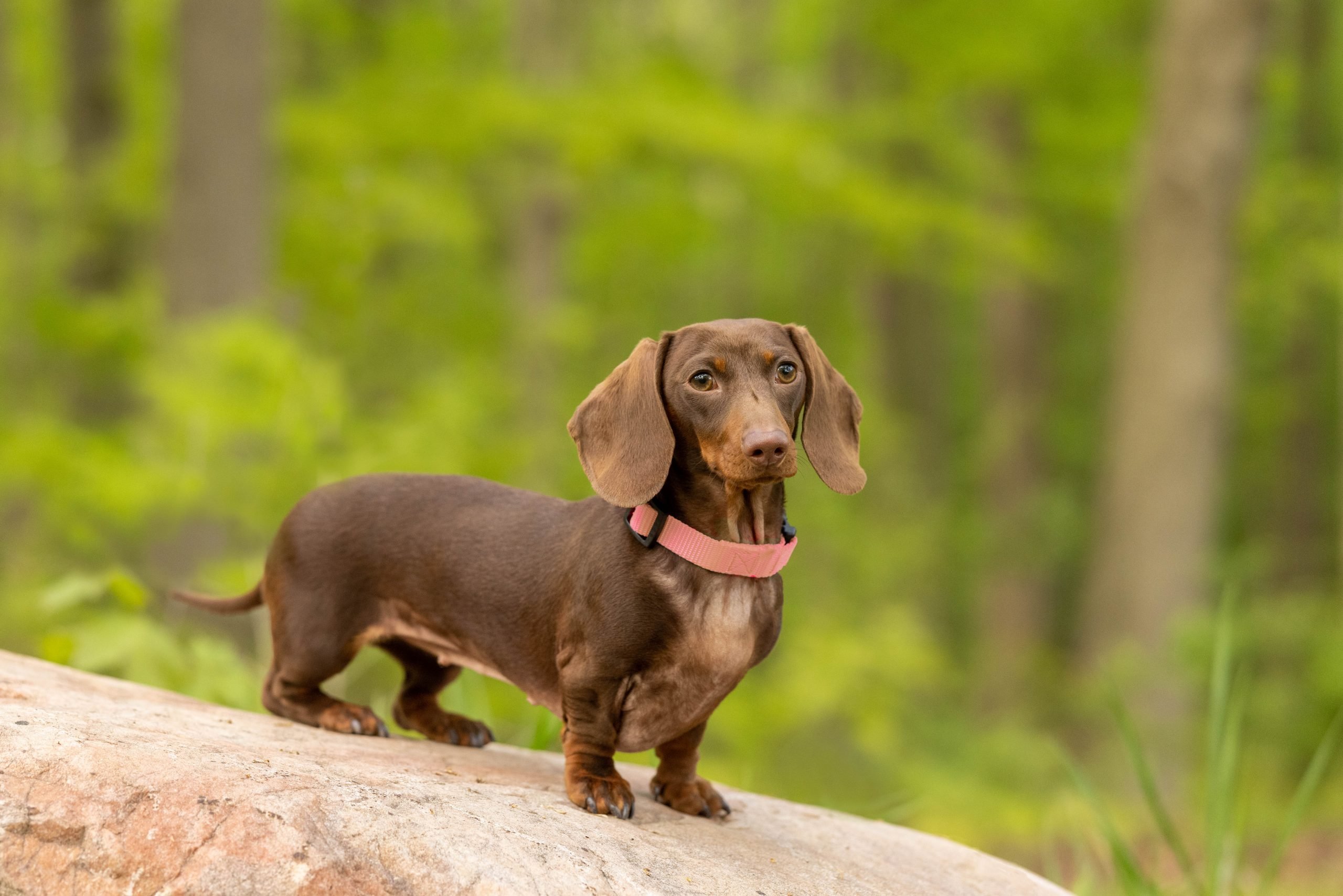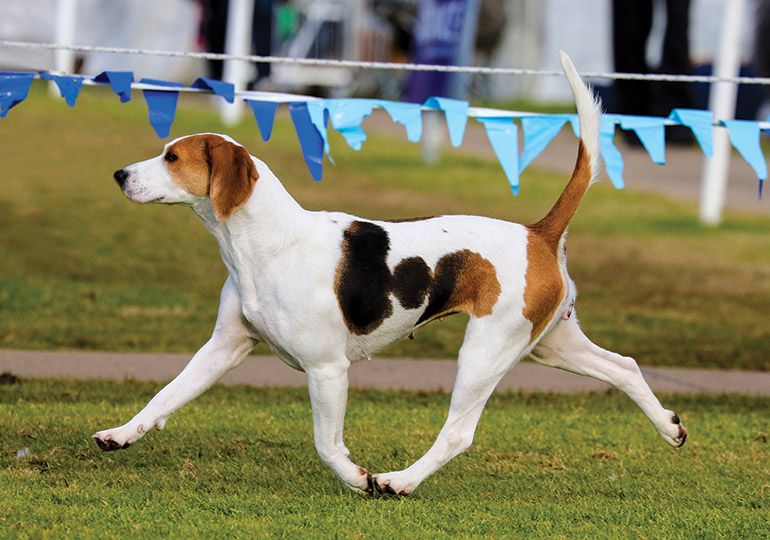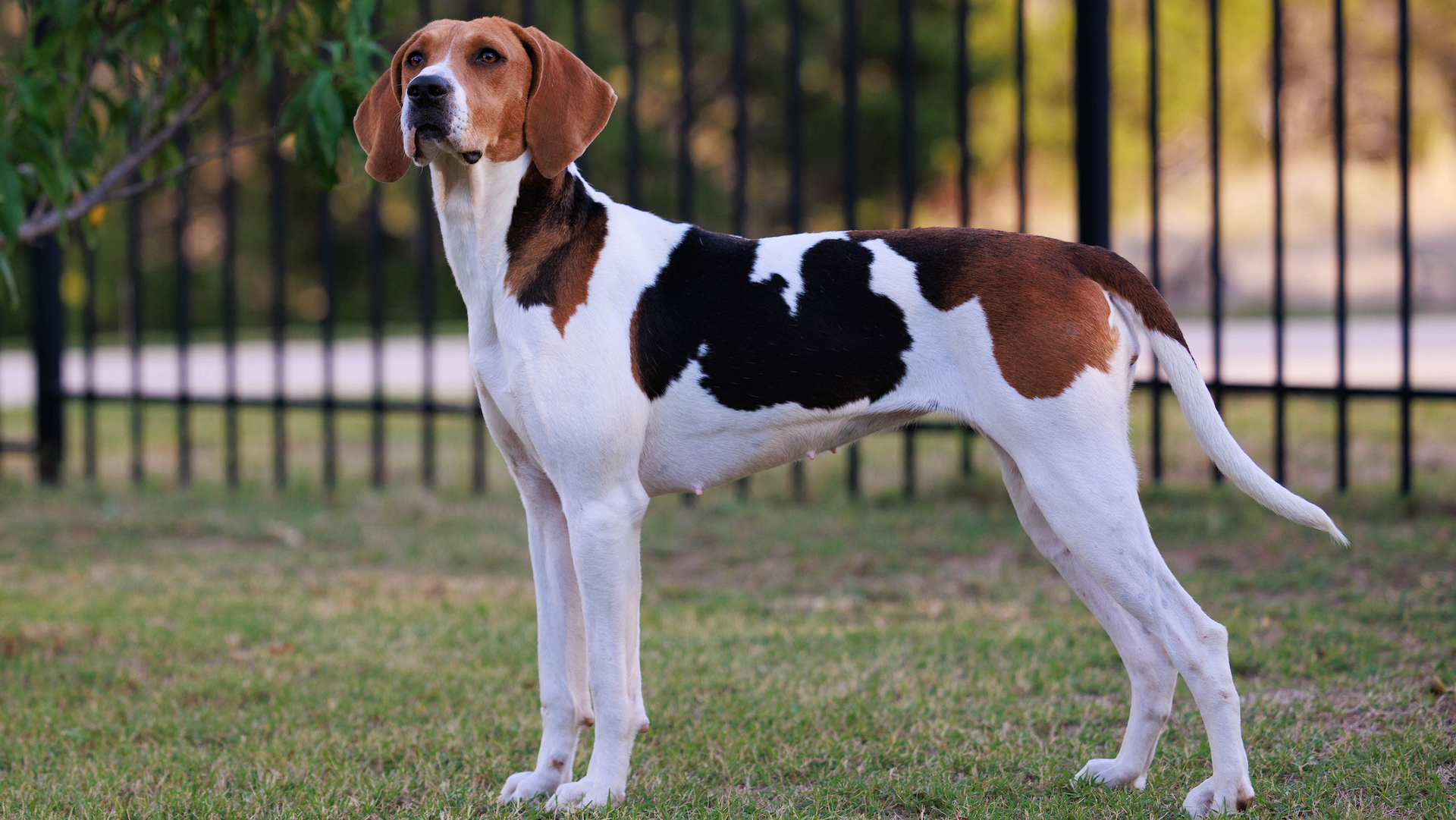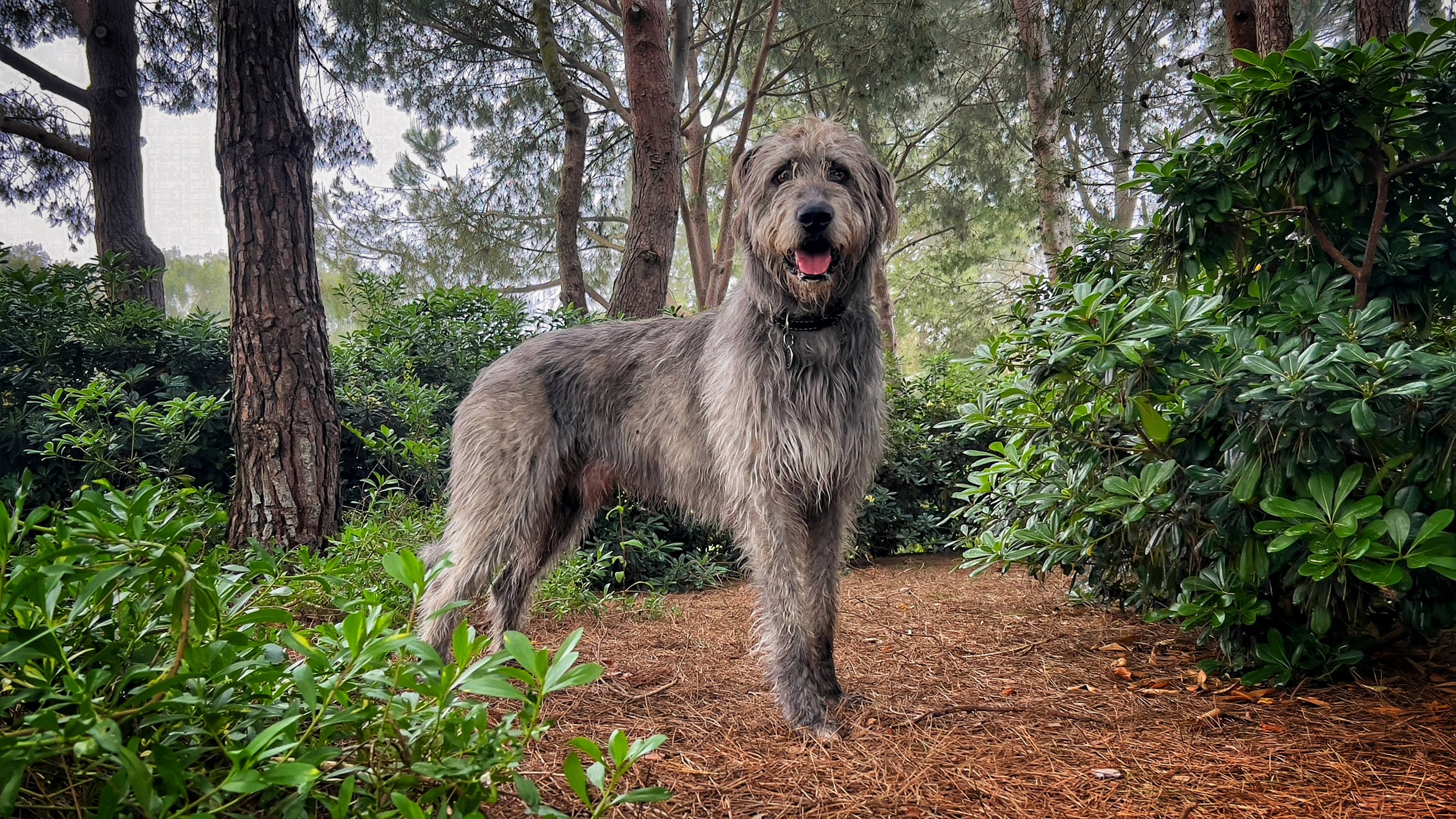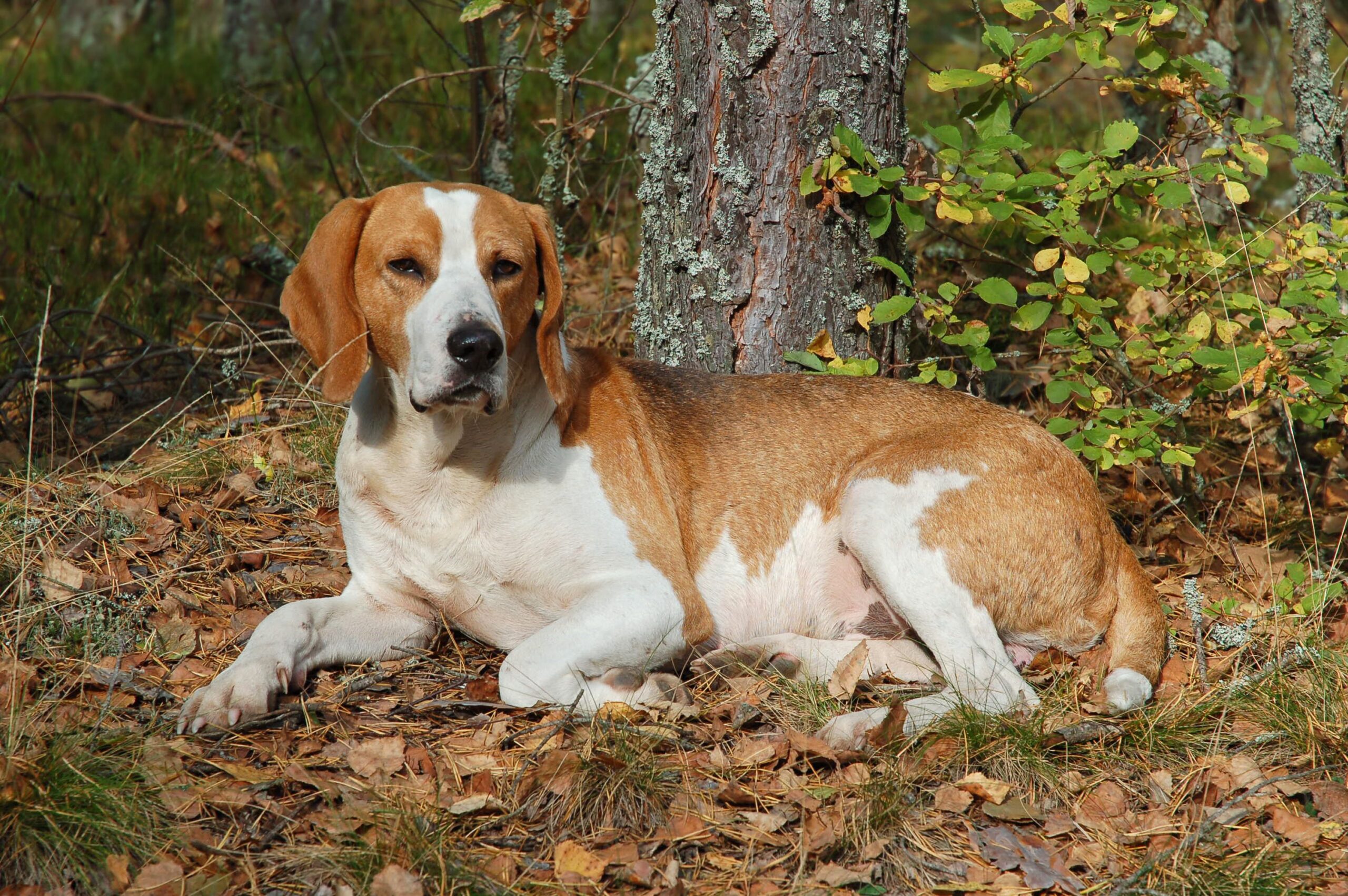My Journey Into Dachshund Obsession (And Why You Might Join Me)
The first time I truly appreciated a Dachshund’s unique charm was at my friend Sarah’s apartment. I’d just settled on her couch when I heard the clickety-clack of tiny nails on hardwood, followed by what can only be described as a determined grunt. Suddenly, a small, long-bodied dog with soulful eyes and impossibly short legs appeared around the corner, carrying a squeaky toy nearly as big as himself. With surprising athleticism, he launched himself onto the couch, dropped his prize in my lap, and fixed me with an expectant stare that clearly communicated: “I have brought you this treasure. Now, throw it for me, human.”
That was Bruno, Sarah’s miniature Dachshund, and for the next hour, I witnessed firsthand the hilarious determination, surprising strength, and undeniable charisma packed into that small, sausage-shaped body. By the end of the evening, I was completely smitten. “They’re all like this,” Sarah explained as Bruno performed his fifth “victory lap” after retrieving his toy. “Completely convinced they’re big dogs, absolutely certain that everyone adores them, and stubbornly determined to get what they want. It’s impossible not to fall in love with them.”
If you’ve never had a Dachshund in your life, you might wonder what all the fuss is about. How did these quirky little dogs with the funny shape inspire such devoted fans and an endless array of merchandise, from socks to coffee mugs to holiday ornaments? What makes them so special that people don’t just get one Dachshund but often end up with two, three, or an entire “wiener dog pack”?
Whether you’re considering adding one of these charming hounds to your family, curious about their unique traits, or just want to understand why your Dachshund-owning friends can talk about nothing else, I’ve put together the ultimate guide to these delightful dogs. From their fascinating history as badger hunters to their distinctive personalities and special care needs, we’ll cover everything you need to know about Dachshunds. So grab your favorite beverage, get comfortable (preferably with a small, long dog on your lap), and let’s dive into the wonderful world of Dachshunds!
From Badger Hunters to Beloved Companions: The Fascinating History of Dachshunds
To truly understand what makes Dachshunds so special, we need to appreciate their remarkable history, which explains so much about their unique appearance and distinctive personality traits.
German Origins and Working Purpose
The Dachshund’s story begins in Germany at least 600 years ago, with evidence suggesting the breed might date back even further. Their name gives away their original purpose: “Dachs” means badger in German, and “hund” means dog. Yes, these small dogs were specifically bred to hunt ferocious badgers – animals that can weigh up to 35 pounds and are known for their aggression when cornered.
This seemingly improbable task shaped every aspect of the Dachshund’s physical design. Their long, low bodies allowed them to enter badger burrows, while their powerful legs and large paws made them efficient diggers. Their deep chest provided lung capacity and heart room for stamina, and their strong jaws and big teeth (relative to their size) gave them the tools to confront their quarry.
Different varieties of Dachshunds were developed for specific hunting purposes. The smooth-coated variety was the original badger hunter, while the longhaired Dachshund was developed for hunting in colder conditions and possibly through crossing with spaniels. The wirehaired variety, created by crossing with terriers, specialized in hunting in rough terrain and brush.
Beyond badgers, Dachshunds were also used to hunt other burrowing animals like foxes and rabbits. Smaller Dachshunds were bred to hunt hares and weasels, while packs of Dachshunds were sometimes used to hunt wild boar – a testament to their courage and tenacity that persists in today’s companion Dachshunds.
Royal Favorites and Symbol of Germany
Dachshunds weren’t just working dogs; they became favorites in royal and noble households across Europe. Queen Victoria of England was a notable enthusiast, helping to popularize the breed outside of Germany. Their intelligence, loyalty, and distinctive appearance made them stand out among the many breeds favored by the aristocracy.
In their native Germany, Dachshunds became something of a national symbol. Their popularity was such that during World War I, they fell out of favor in the United States and England due to their German associations. The American Kennel Club even briefly renamed them “badger dogs” during this period to avoid the German name.
Modern Popularity and Cultural Impact
By the early 20th century, Dachshunds had transitioned primarily from working dogs to beloved companions. Their distinctive shape made them instantly recognizable, and their spirited personalities won them devoted fans worldwide. The breed experienced a resurgence in popularity after World War II and has remained consistently popular ever since.
Dachshunds have left their mark on popular culture in numerous ways. They’ve been the companions of famous figures ranging from artists like Picasso and Andy Warhol to writers like E.B. White and John Steinbeck. Their distinctive silhouette has become iconic in art, advertising, and merchandise. Perhaps most famously, a Dachshund named Waldi was the first official Olympic mascot for the 1972 Munich Games.
Today’s Dachshund still carries the genetic heritage of those brave badger hunters, manifested in their tenacity, intelligence, and sometimes stubborn determination. Understanding this heritage helps explain why your small living room companion might fearlessly challenge much larger dogs or relentlessly pursue a favorite toy – they’re simply channeling the courage and persistence that once helped them confront badgers in their underground dens.
The Distinctive Dachshund Look: Form Follows Function
The Dachshund’s appearance is perhaps one of the most recognizable in the dog world – that long body balanced on short, sturdy legs creates a silhouette unlike any other breed. But what many people don’t realize is that every aspect of this distinctive look developed for functional hunting purposes rather than simply to charm human companions.
Size Varieties and Proportions
Dachshunds come in two sizes recognized by most kennel clubs: standard and miniature. Standard Dachshunds typically weigh between 16-32 pounds, while miniatures weigh under 11 pounds. In their European homeland, you’ll sometimes hear of a third “rabbit” size, even smaller than the miniature.
Regardless of size, all Dachshunds share the same distinctive proportions – a body length (from chest to rump) that should be approximately 1.8 times their height at the shoulder. This elongated shape was specifically designed to allow them to navigate through narrow tunnels while hunting.
Their chest is deep and capacious, providing room for well-developed lungs and heart – essential for a dog that needed stamina for digging and fighting. The ribcage extends well back along the body, offering protection for vital organs while working underground.
Those famously short legs, while adorable, were a practical adaptation that allowed Dachshunds to work in constricted underground spaces where taller dogs couldn’t fit. Despite their shortened length, these legs are remarkably powerful, with substantial bone structure and well-developed muscles.
Coat Varieties and Colors
Dachshunds come in three distinct coat varieties, each originally developed for specific hunting conditions:
- Smooth-coated (short hair): The original and most recognizable variety, with sleek, shiny fur that required minimal maintenance and wouldn’t collect burrs or debris in badger dens
- Longhaired: Featuring silky, sometimes slightly wavy hair that’s longer on the ears, chest, belly, and behind the legs, likely developed for hunting in colder regions
- Wirehaired: Possessing a coarse, wiry outer coat with a soft undercoat, distinct beard and eyebrows, and generally “scruffier” appearance, bred for work in rough terrain and thorny underbrush
The color palette for Dachshunds is remarkably diverse. They come in solid colors including red (ranging from light cream to deep auburn), black, chocolate, blue (a diluted black), and isabella (a diluted chocolate). Pattern variations include dapple (merle), brindle, sable, piebald, and various combinations of these with tan points.
While all colors and patterns can make wonderful pets, it’s worth noting that certain color genetics can be associated with health issues. Double dapple Dachshunds (those with the merle gene from both parents) can have serious vision and hearing problems. Responsible breeders avoid these combinations despite some of the striking coat patterns they can produce.
The Expressive Dachshund Face
Beyond their body shape and coat, Dachshunds are known for their expressive faces and soulful eyes. Their faces reflect their alert, intelligent nature, with almond-shaped eyes that can communicate a remarkable range of emotions from playful mischief to dignified judgment.
Their ears are set high on the head and are long, soft, and rounded at the tips. When alert, a Dachshund will often raise their ears slightly, giving them an attentive, curious expression that owners find irresistible. Those long ears served a practical purpose too – helping to stir up scents from the ground while hunting and potentially protecting the ear canal from dirt while digging.
One of the most charming physical features of many Dachshunds is their expressive eyebrows – particularly noticeable in the wirehaired variety with their distinctive facial furnishings. These eyebrows can give Dachshunds a perpetually worried, thoughtful, or inquisitive look that adds to their considerable charm.
Personality & Temperament: Big Dog Attitude in a Small Package
Beyond their distinctive appearance, what truly endears Dachshunds to their devoted fans is their outsized personality. These small dogs carry themselves with the confidence and attitude of much larger canines, creating a charming contradiction that Dachshund lovers find irresistible.
Brave, Bold, and Sometimes Stubborn
The courage that once enabled Dachshunds to confront badgers still runs strong in today’s companions. Most Dachshunds approach life with remarkable confidence, often showing no awareness of their small stature when confronting larger dogs or novel situations. This boldness can be both endearing and occasionally problematic, as some Dachshunds may fearlessly challenge dogs many times their size.
Along with this bravery comes a notable streak of independence and sometimes outright stubbornness. Bred to think for themselves while hunting underground where they couldn’t receive handler commands, Dachshunds often approach training and rules with a distinctly negotiable attitude. Many owners describe their Dachshunds as having selective hearing – perfectly capable of understanding commands but choosing when they feel like complying.
This independence doesn’t mean Dachshunds are unintelligent – quite the contrary. They’re clever problem-solvers who can show remarkable ingenuity when motivated, particularly if food is involved. They’re simply dogs who prefer to understand why they should do something rather than following orders blindly.
Loyal, Loving, and Surprisingly Protective
Despite their independent streak, Dachshunds typically form deep bonds with their humans and can be extraordinarily loyal companions. Many become particularly attached to one special person, though they generally show affection to the entire family.
This loyalty often manifests as a surprising protectiveness. Despite their small size, many Dachshunds take their role as home defenders seriously, alerting with their surprisingly deep, loud barks to anything they consider suspicious. Some can be quite territorial, a trait that likely stems from their history of defending their hunting territory from other predators.
In family settings, most Dachshunds are loving and affectionate, often seeking physical closeness with their people. They’re notorious burrowers who love nothing more than tunneling under blankets or settling into a warm lap. Many owners report that their Dachshunds seem to have an almost uncanny ability to sense when someone is sad or unwell, offering quiet companionship and comfort.
Playful, Energetic, and Entertaining
One of the most delightful aspects of Dachshund personality is their capacity for joy and play well into adulthood. While they certainly enjoy their lounging time (preferably on the softest available surface), they typically maintain a puppylike enthusiasm for games and activities throughout their lives.
Many Dachshunds develop specific play preferences that showcase their hunting heritage. Some love digging, creating impressive excavations in yards or burrowing into blanket piles. Others are enthusiastic trackers who will follow scent trails with focused determination. Many enjoy “kill the squeaky” games with plush toys, shaking and “disemboweling” them with comedic ferocity.
Their play style often involves short bursts of intense energy followed by relaxation periods – a pattern that suited their original hunting purpose and makes them adaptable to various household activity levels. They can be surprisingly athletic despite their unusual proportions, capable of impressive jumps and quick turns that belie their long-backed appearance.
Perhaps most endearing is the Dachshund’s apparent sense of humor. Many owners report that their dogs seem to enjoy making them laugh, sometimes performing silly antics with what appears to be deliberate comic timing. This playful spirit, combined with their expressive faces and distinctive body language, makes living with a Dachshund an often entertaining experience.
Living With a Dachshund: Practical Considerations
Beyond their charming personalities and distinctive appearance, what’s it actually like to share your home with a Dachshund? There are some unique considerations that potential owners should understand before bringing one of these special dogs home.
Back Health and Exercise Needs
The most significant health concern for Dachshunds is intervertebral disc disease (IVDD), a condition affecting the spine where discs between vertebrae can herniate or rupture. Their elongated back and short legs create more stress on the spine than in proportionally built dogs, making them particularly vulnerable to this painful and potentially debilitating condition.
Protecting your Dachshund’s back requires lifelong vigilance and preventive measures:
- Minimize jumping, especially from heights like furniture or beds
- Use ramps or steps for accessing furniture if allowed up
- Support both ends of the body when picking them up
- Maintain appropriate weight to reduce strain on the spine
- Choose harnesses rather than collars for leash walking to avoid neck strain
- Provide appropriate exercise that strengthens core muscles without stressing the spine
Speaking of exercise, despite their small size, Dachshunds need regular activity to stay healthy and prevent behavior problems. Most benefit from 30-60 minutes of exercise daily, divided into multiple shorter sessions rather than one long walk. They generally enjoy walking, sniffing expeditions, and play sessions, but should avoid activities that involve jumping or rough play that could twist their backs.
Swimming can be excellent exercise for Dachshunds as it provides resistance without impact on the spine, though not all take naturally to water. Core-strengthening exercises prescribed by veterinarians or canine physical therapists can also help support back health.
Training Challenges and Opportunities
Training a Dachshund requires understanding their unique mindset and working with, rather than against, their natural tendencies. Their independent thinking and occasional stubbornness can make traditional obedience training challenging, but they’re entirely capable of learning when properly motivated.
Effective Dachshund training typically involves:
- Starting early in puppyhood when they’re most receptive
- Using positive reinforcement with high-value rewards
- Keeping sessions short, fun, and engaging
- Being consistent with rules and expectations
- Avoiding repetitive drills that might bore them
- Understanding that they may need to “think it over” before complying
Housetraining can be particularly challenging with some Dachshunds, especially in cold or wet weather which many find deeply objectionable. Patience, consistency, and positive reinforcement for success are essential. Some owners find indoor potty options helpful during inclement weather or for homes without easy outdoor access.
One training area that deserves special attention is barking management. Many Dachshunds are vocal dogs who bark to alert, express excitement, demand attention, or simply share their opinions on current events. Early training for a “quiet” command and avoiding inadvertently rewarding barking with attention can help manage this natural tendency.
Family Compatibility and Social Needs
Dachshunds can adapt well to various household compositions, though there are some considerations for specific living situations:
- Families with children: Most Dachshunds can do well with respectful children who understand how to interact safely with small dogs and avoid rough handling that could injure their backs. However, they may not tolerate rough or unpredictable behavior from very young children.
- Multi-pet households: Individual tolerance for other pets varies widely. Some Dachshunds live peacefully with cats and other dogs, while others maintain strong prey drives or same-sex aggression. Early socialization helps, but natural tendencies play a significant role.
- Living space: Dachshunds can adapt well to apartment living provided they receive adequate exercise and mental stimulation. Their size makes them physically suited to smaller spaces, though their vocal tendencies might challenge in close-quarters living.
In terms of social needs, most Dachshunds form strong attachments to their humans and prefer to be included in family activities rather than left alone for long periods. Many develop separation anxiety if regularly left alone for extended times, which can manifest as destructive behavior, excessive barking, or inappropriate elimination.
Enrichment is important for these intelligent dogs. Puzzle toys, scent games, and rotating toys can help keep their active minds engaged when human interaction isn’t available. Many enjoy having multiple comfortable resting spots throughout the home where they can monitor household activities from a position of comfort.
Dachshund Varieties: Choosing Your Perfect Wiener Dog
With two size varieties and three coat types, potential Dachshund owners have several options to consider when choosing the right match for their lifestyle. While all Dachshunds share the core breed characteristics, there are some notable differences between the varieties that might influence your choice.
Size Considerations: Standard vs. Miniature
The size difference between standard and miniature Dachshunds affects more than just how much space they take up on your couch. Some general differences often observed between the two sizes include:
- Standard Dachshunds (typically 16-32 pounds) are generally sturdier and less fragile than their miniature counterparts. Some owners find them slightly more confident and less prone to nervousness.
- Miniature Dachshunds (under 11 pounds) are more portable and may adapt better to smaller living spaces. Their smaller size can make them more vulnerable to injury, particularly from rough handling or jumping.
- Standards often have slightly lower energy levels than miniatures, though individual variation exists in both sizes.
- Miniatures may be somewhat more challenging to housetrain, simply due to their smaller bladder capacity.
- Standards may be better suited to homes with children due to their more robust build, though supervision is always important with any dog and child interaction.
Health considerations can also vary somewhat by size. Standard Dachshunds may experience slightly higher rates of IVDD (back problems) due to their greater weight, while miniatures may be more prone to certain dental issues simply because of their smaller mouths.
Coat Varieties: Grooming and Temperament Differences
The three coat varieties – smooth, longhaired, and wirehaired – each have unique grooming requirements and are often associated with slight temperament differences:
- Smooth Dachshunds have the lowest maintenance coats, typically requiring just weekly brushing and occasional baths. They shed moderately but consistently throughout the year. Temperamentally, they’re often described as the most “classic” Dachshunds – clever, occasionally stubborn, and deeply devoted to their people.
- Longhaired Dachshunds need more frequent brushing (2-3 times weekly) to prevent mats, with special attention to the ears, chest, belly, and leg feathering. They’re thought to have slightly softer temperaments on average, perhaps reflecting the spaniel influence in their development. Many owners describe them as particularly affectionate and somewhat less intense than their smooth counterparts.
- Wirehaired Dachshunds have the most complex grooming needs, requiring regular brushing, occasional hand-stripping to maintain proper coat texture, and beard/eyebrow care. Their terrier heritage often shows in their temperament – typically being the most energetic and sometimes the most independent-minded of the three varieties. Many display pronounced earthdog behaviors like digging and determined pursuit of small animals.
It’s important to remember that these temperament differences are generalizations with significant individual variation. Proper socialization, training, and individual personality play greater roles in a dog’s behavior than coat type, but these traditional differences can be helpful general guidelines.
Color and Pattern Variations
While coat color doesn’t affect temperament or health in most cases, certain color genetics deserve special mention:
- Dapple (merle) Dachshunds have a beautiful spotted pattern but carry a genetic mutation that can cause health problems when two dapple dogs are bred together. “Double dapple” puppies may suffer from vision and hearing impairments and other developmental issues.
- Piebald Dachshunds have white spotting with colored patches. Unlike dapple, the piebald gene is not associated with health concerns when two piebald dogs are bred together.
- Cream or “English cream” Dachshunds are not a separate variety but simply Dachshunds with a very light red coloration. Despite sometimes being marketed as rare or special, they’re simply a color variation within the breed standard.
When choosing a Dachshund, color and pattern should be secondary considerations to health, temperament, and finding a responsible breeder who conducts appropriate health testing.
Common Health Issues and Caring for Your Dachshund
Every breed has its specific health considerations, and Dachshunds are no exception. Understanding these common issues can help you provide proactive care and potentially avoid serious problems.
Back Health: The Primary Concern
As mentioned earlier, intervertebral disc disease (IVDD) is the most significant health concern for Dachshunds. By some estimates, nearly 25% of Dachshunds will experience some degree of disc disease during their lifetime. Signs of IVDD can range from mild pain to complete paralysis and may include:
- Reluctance to jump or climb stairs
- Crying out in pain when touched or moved
- Walking with an arched back or hunched posture
- Reduced activity or reluctance to move
- Shaking or muscle spasms
- Dragging rear legs or inability to support weight
IVDD is a medical emergency requiring immediate veterinary care. Treatment options range from conservative management with strict rest and pain medication for mild cases to emergency surgery for severe cases. The prognosis varies based on the severity and how quickly treatment is obtained.
Prevention strategies include all the back-protective measures mentioned previously, plus maintaining appropriate weight (obesity significantly increases IVDD risk) and considering supplements like glucosamine and chondroitin under veterinary guidance.
Other Health Considerations
While back problems are the most widely recognized health issue, Dachshunds can experience other breed-specific concerns:
- Obesity: Their love of food combined with a build that makes exercise challenging puts Dachshunds at high risk for weight problems. Obesity exacerbates back issues and can lead to diabetes and joint problems.
- Dental disease: Particularly in miniatures, dental overcrowding and tooth decay can be common. Regular dental care, including home tooth brushing and professional cleanings, is important.
- Patellar luxation: This condition, where the kneecap slips out of place, affects many small breeds including Dachshunds.
- Eye problems: Various eye conditions including progressive retinal atrophy, cataracts, and glaucoma can occur in the breed.
- Heart issues: Some Dachshunds develop heart murmurs or valve problems as they age.
- Skin conditions: Allergies and skin irritations can affect some individuals, particularly in the folds around the neck or in the ears.
Working with a veterinarian familiar with the breed’s specific needs is important for preventive care. Many vets recommend twice-yearly checkups for Dachshunds rather than the standard annual visit, particularly as they enter their senior years.
Lifespan and Aging Considerations
With good care, Dachshunds typically live 12-16 years, with some individuals reaching their late teens. This relatively long lifespan means you’ll likely share many years with your wiener dog companion, including a significant senior period.
As Dachshunds age, you may notice:
- Reduced activity levels and increased sleep
- Graying around the muzzle and face
- Decreased hearing or vision
- Stiffness, especially in the morning or during cold weather
- Weight changes (either gain from reduced activity or loss from decreased appetite)
- Dental issues requiring more intensive care
Accommodations for senior Dachshunds might include more accessible sleeping arrangements, joint supplements, adjusted exercise routines, and more frequent veterinary monitoring. Many senior Dachshunds benefit from ramps or steps for furniture access, orthopedic bedding, and modified feeding strategies if dental issues affect their ability to eat normally.
With attentive care tailored to their unique physical needs, most Dachshunds can enjoy active, comfortable senior years as beloved family companions.
Is a Dachshund Right for You? Honest Assessment
After learning all about these charismatic little hounds, you might be wondering if a Dachshund would fit well in your lifestyle. Let’s take an honest look at who should (and perhaps shouldn’t) consider this breed.
You Might Be a Great Dachshund Owner If…
A Dachshund might be right for you if:
- You appreciate a dog with personality and aren’t bothered by some stubborn independence
- You’re home relatively often and can provide companionship
- You’re willing to invest time in positive, patient training
- You can provide appropriate exercise without back strain
- You don’t mind some barking and vocal “opinions”
- You’re prepared for potential back problems and associated veterinary care
- You find their distinctive look and animated personality charming
- You enjoy a dog that’s affectionate but not typically clingy
- You have a sense of humor and appreciate canine mischief
Dachshunds can adapt well to various living situations, from apartments to houses with yards, provided their exercise and companionship needs are met. Many do well with older children who understand how to interact safely with them.
A Different Breed Might Be Better If…
A Dachshund might not be the best choice if:
- You want an easily trainable dog that eagerly obeys commands
- You’re away from home for long periods regularly
- You live in a home with many stairs they’d need to navigate
- You have very young or rough children
- You want a quiet dog that rarely barks
- You’re not prepared for potential back problems and associated costs
- You want an off-leash hiking or jogging companion
- You prefer a dog that’s consistently friendly with strangers and other animals
- You’re a first-time dog owner looking for an “easy” breed
Finding Your Dachshund
If you decide a Dachshund is right for you, there are several paths to finding your perfect wiener dog companion:
- Reputable breeders: Look for breeders who conduct health testing for IVDD predisposition, eye conditions, and patellar luxation. Good breeders will ask you many questions and be happy to answer yours. Expect to be placed on a waiting list, as responsible breeders don’t always have puppies available immediately.
- Breed-specific rescue: Dachshund rescue organizations exist across the country and often have wonderful dogs needing homes. Adult rescue Dachshunds may already have basic training and established personalities that can make matching to your lifestyle easier.
- Shelters and general rescue: Dachshunds and Dachshund mixes frequently appear in shelters and rescue organizations. While their exact background may be unknown, many make wonderful companions.
Be wary of suspiciously low prices, breeders with constantly available puppies, or those unwilling to show you their breeding facilities or allow you to meet the puppy’s parents. These are often red flags for puppy mills or irresponsible breeding practices that can result in health and temperament problems.
Conclusion: Life is Better with a Dachshund
There’s something truly special about sharing your life with a Dachshund. Perhaps it’s their unique combination of physical distinctiveness and outsized personality. Perhaps it’s their surprising range of expressions from dignified judgment to comic mischief. Or perhaps it’s simply the way these small, determined dogs approach life with unwavering confidence and zest.
Living with a Dachshund means adjusting to certain realities – the need to protect their backs, acceptance of their occasional stubbornness, and willingness to admire the impressive hole they just dug in your garden. But for those who appreciate their special qualities, these accommodations are minor compared to the joy they bring.
Dachshund owners often say that once you’ve had one, no other breed quite compares. There’s something about their spirited determination, their loyal affection, and yes, their comical appearance that creates a bond unlike any other. From their excited morning greetings to their contented snoring beside you on the couch, Dachshunds have a way of weaving themselves into the fabric of your daily life and making everything a little brighter.
As the saying goes among Dachshund enthusiasts: “You don’t own a Dachshund – a Dachshund owns you.” For the right person with the right expectations, truer words were never spoken.
